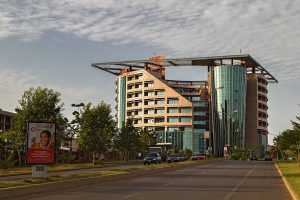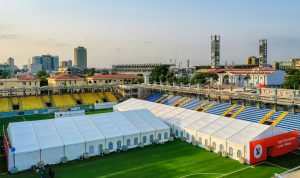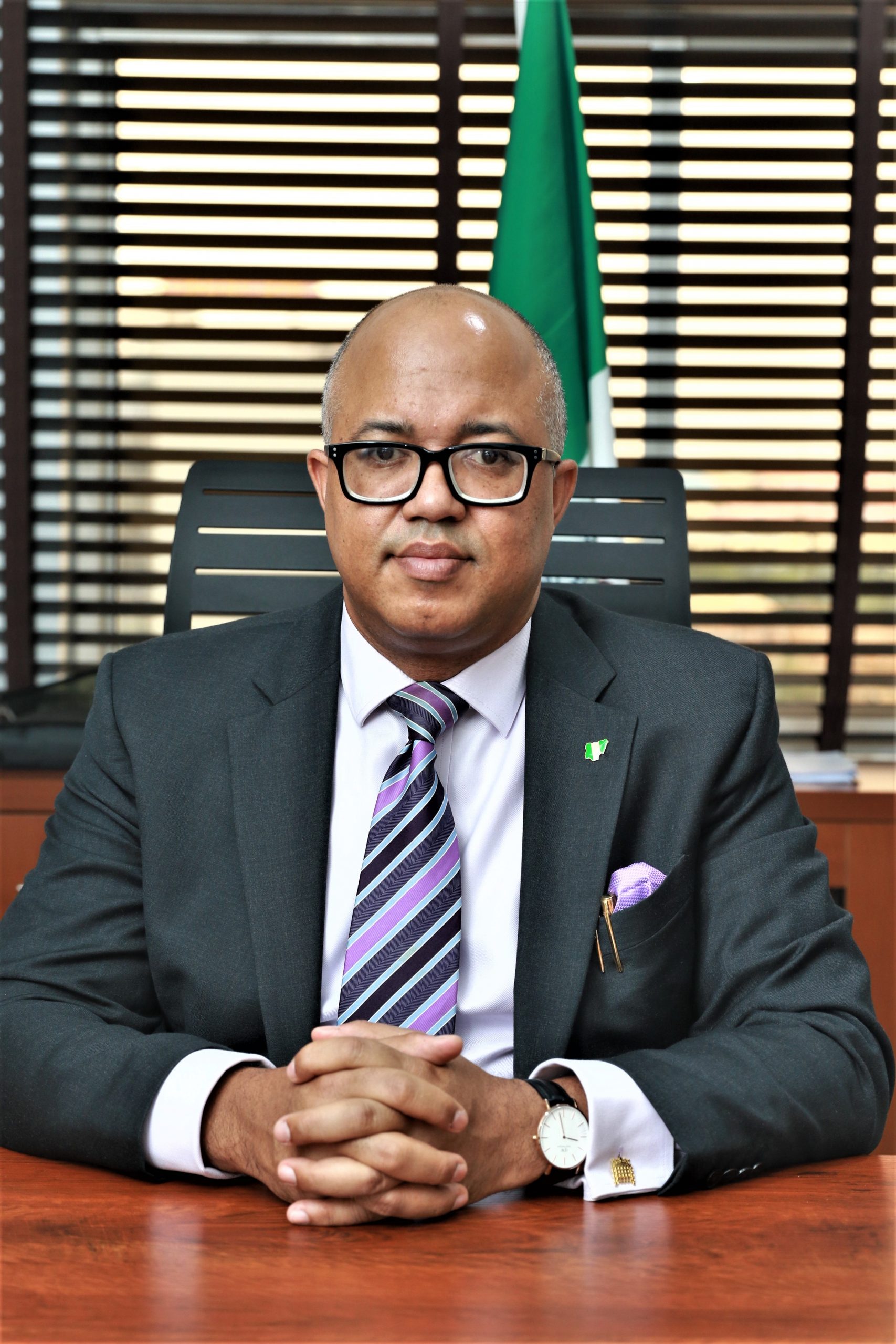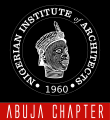“HEALTH, WEALTH, WHAT NEXT?- The Role of Architecture in Fighting the Covid-19 Pandemic”
- March 23, 2021
- Architecture, Biennial General Meeting, Covid-19, Nigerian Centre For Disease Control
- Comments Off on “HEALTH, WEALTH, WHAT NEXT?- The Role of Architecture in Fighting the Covid-19 Pandemic”
- NIAABC Editor

Dr. Chikwe Ihekweazu – Director General, Nigerian Centre For Disease Control
Nigeria amongst many other African countries defied projected models and simulations of the effect of the Covid-19 pandemic on the population. While this phenomenon was ascribed in some quarters to the hand of God / God’s special kind of love for all that concerns Nigeria, the critical and unifying role played by the Nigerian Centre for Disease Control (NCDC) in rising to the challenges posed by the unfolding pandemic cannot be overlooked. As its Director – General, Dr Chikwe Ihekwazu’s stellar expertise and excellent professional pedigree has been useful in marshalling his efficient team in the excellent management of the pandemic in Africa’s most populous nation since when the first case of Covid 19 was reported in Nigeria on the 26th of February 2020.

So, it was a great honour when the NIA Abuja Chapter hosted Dr Chike Ihekwazu as one of its guest speakers at the 17th edition of its Biennial General Meeting in July 2020. The NCDC boss expressed delight at the opportunity to engage with other important professionals especially architects whose importance in the fight against COVID 19 through design cannot be overemphasized. He also considered the opportunity a golden one as few platforms had been presented him to interact with other professionals asides those in the health sector and the general public.
In his forty – five-minute presentation entitled “Health, Wealth, What Next?”, the utilization of the One Health approach in the fight against infectious diseases by the NCDC was emphasized. This approach pays due cognizance to the interrelationship among humans, animals and the environment. The environment plays a pivotal role in the triage, either mitigating or providing opportunities for the transmission of infectious diseases since transmission is either from person to person or from animal to person. Reference was made to the evolution of infectious diseases in the Western World – especially Europe and the United States, where the reduction in transmission of infectious diseases had little to do with the intervention of medical professionals. Instead, architecture had a big role to play in this regard. The reduction was championed by an increase in socio-economic conditions which led to improved living conditions provided by architecture. This in turn led to the reduction in transmission channels with the attendant reduction in infectious diseases.

National Communications Headquarters, Abuja
Nigeria’s top epidermologist pointed out that one of the major benefits of modern progressive architecture is the due thought by default given to the mitigation of diseases transmission through design considerations such as ventilation, natural lighting, greenery, etc. Work depends on engagement and interaction with other professionals in the provision of clean water, good environments and suitable accommodation. He challenged architects to learn to deal with the threat of emerging diseases in the professional discharge of our responsibilities.
Dr. Ihekwazu also touched on the long-term implications of Covid-19 as well as some general points to consider –
- Cities will become the epicentres of outbreaks as has been witnessed thus far. There is the urgent need to design healthier and resilient cities
- Better access to healthcare in cities, clean water, sanitation is needed.
- Architects need to design with flexibility to enable conversions and adaptability to support greater challenges that the future may hold.
- The pandemic provides architects with the opportunity to redesign a healthier society
He also opined that big roles abound for architects in designing better ways of living. To this end, architects will need to strike a balance between impacting lives and earning a livelihood, that is, weigh the options of providing aesthetics and durability required by the client versus the requirements for building for sustainability and health. Future design required to take possibility of infectious diseases outbreak into consideration.
Dr Chikwe Ihekwazu tasked architects on the need to raise our professional voices on issues of inequality in the built environment especially those areas requiring urgent attention such as the provision of water, power and other amenities as well as other bigger population issues. The need to engage with state governments by the Nigerian Institute of Architects (NIA) state chapter representatives was emphasized. Highlighted were emerging opportunities in the private sectors with the accreditation of private hospitals for Covid-19 treatment where design expertise is required. This is turn will lead to a specialized sub-set of architects versed in that aspect.
Once more, he stressed the importance of the opportunity presented by the auspicious occasion and promised how to think with us regarding bigger challenges.
WHERE CAN ARCHITECTURE HELP DESIGN A HEALTHIER POST-COVID 19 NIGERIA?
- Redesigning hospitals. He referenced historical architecture where cross ventilation that helped mitigate the spread of infectious disease and control was commonplace in comparison to modern architecture with its heavy dependence on artificial ventilation. In our design, infection prevention and control take centre stage.
An example was given of the of the Onikan Covid-19 Treatment Centre, Lagos which could only be utilized six weeks after commissioning as a result of the retrofitting required for safety of both patients and doctors alike. From all indications, the right questions were not posed to the right experts.

Onikan Covid-19 Treatment Centre, Lagos
- Redesigning educational facilities. Be more vocal about solutions required. Deal with the overcrowded facilities that are have become grossly inadequate going by the country’s population growth rate of 3% per annum
- Redesigning workplaces with due consideration for tackling the threat of infectious disease taken into consideration.
COLLABORATION – Working together
- Better synergy in policies. Proper representation. Have the right people in the room when decisions are being taken. Creating seats at the tables of decisions.
- Collection and distribution of data. Information about Covid-19. Available on the NCDC microsite.
- Sensitization of the political class. People making decisions may not necessarily have the information hence the need for proactivity on the part of architects and other related professionals with the swift provision of important information.
THE FUTURE
Better Health Awareness. Prioritizing on projects that have direct impact on the wellbeing of the citizens e.g. healthcare infrastructure instead of egocentric projects that play to the gallery instead of solving pressing needs faced by the populace.
CONCLUSION
- Architects will play a big role in designing better ways of living for the future
- We need creative and innovate thinking to challenge previously held ways of life
- We can’t do it alone. Will require effective collaboration with one another.
- Only together can we build a healthy, wealthy and sustainable post-Covid-19 Nigeria.
Photocredit: 1,3,4 – Google Images. 2. NIAABC Facebook Page




Recent Comments